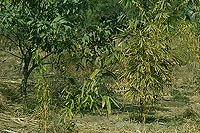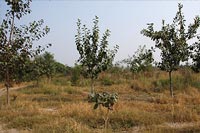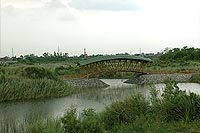
Yamuna Biodiversity Park
Bambusetum
The Bambusetum, a symbol of endurance and resilience, allows specialists to study the wide diversity of bamboo species while generalists enjoy their variety: the climbing Ochlandra, shrub - like Arudinaria, the pole like golden bamboo and the belly shaped Buddha-belly bamboo. Presently, 37 species of bamboos are grown in the Bambusetum. One can see nests of the scaly breasted munia and the red vented bulbul and regularly sight the common castor butterfly hovering over the emerging juvenile bamboo shoots.
Sacred Grove
A total of 30 species of Ficus have been planted in the area called the Sacred Grove which is being developed to showcase plants of religious importance. In the field of conservation, however the term Sacred Grove is used to denote repositories of rare and endemic species, remnants of the primary forest left untouched by the local inhabitants due to the belief that deities reside there.
Wetlands
Two wetlands, which simulate natural water bodies, have been created in the Yamuna Biodiversity Park. One which is long and narrow simulating the river, is 1.8 km long; and the second, which is more open and deep, is spread over about 2 hectares. The creation of wetlands served three useful purposes. Firstly, it adds to the diversity of habitats, secondly, it performs the much-needed ecological functions of water purification, groundwater recharge, and storage of rainwater, and thirdly, it provides the soil for raising the ground level to avoid flooding in the post monsoon period so that the development of terrestrial ecosystems and plant communities can go ahead unhindered.
These wetlands are now home to hundreds of migratory birds as well as native bird species. In other words, a new bird sanctuary has been created within the ambience of metropolitan Delhi. The wetlands also help to preserve the aquatic genetic resources (invertebrates, turtles, fishes, zoo- and phytoplanktons) of the river.






